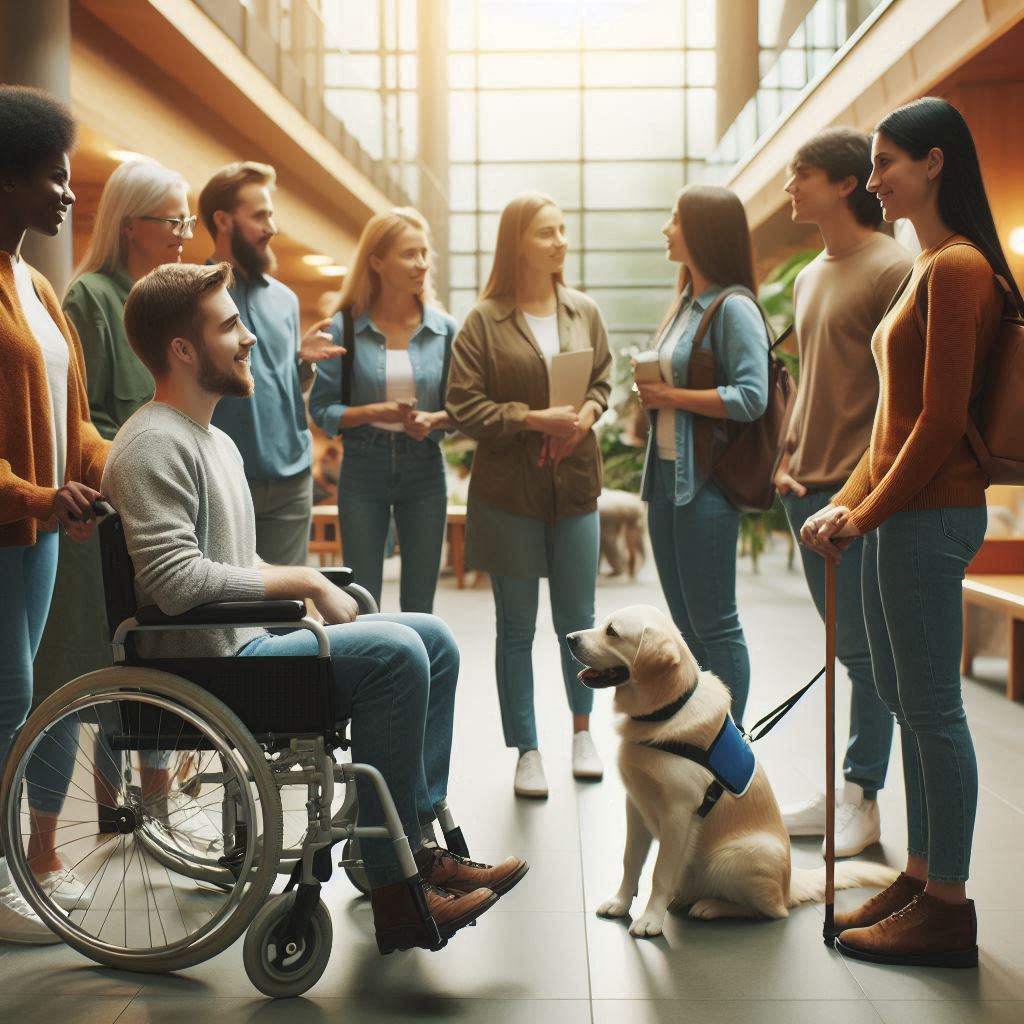|
Getting your Trinity Audio player ready... |
This is the fourth article in our CPACC study series( See the full articles of this series here). Today, we’re tackling something that’s often misunderstood: Disability Etiquette.
This is a must-know topic if you’re preparing for the CPACC exam or just want to interact more respectfully with people with disabilities.

Ever had that split-second panic where you weren’t sure what to say or do around someone with a disability? You’re not the only one, and the good news is, it’s not about memorizing any rules. It’s just about treating people like, well, people.
Since one in four Americans has a disability, chances are you’ll interact with someone who does. So knowing how to communicate and interact respectfully is essential for creating a more inclusive society.
So, let’s cut through the confusion and talk about what actually matters.
Disability Etiquette: The Foundation for Respectful Interactions
What is Disability Etiquette? Disability etiquette is about showing respect in interactions. It’s a mix of language, behaviour, and awareness that ensures people with disabilities feel valued and included.
Inclusion Means Removing Barriers: Inclusion isn’t about simply “welcoming” people with disabilities. it’s about making sure barriers don’t exist in the first place. That applies to physical spaces, digital access, and social interactions.
7 Golden Rules of Disability Etiquette Everyone Should Know
1. Use Person-First Language (Unless told otherwise)
The general rule is to say “a person with a disability” instead of “disabled person.” Why? Because it puts the person first, not the condition.
But here’s where it gets tricky: some people prefer identity-first language, like “Deaf person” or “autistic person.” If in doubt, listen and follow their lead.
2. Ask Before Helping
Not everyone needs or wants help. Instead of assuming, just ask, “Would you like a hand?” If they say no, respect that.
3. Speak to the Person, Not Their Companion
If someone has an interpreter, assistant, or caregiver, talk directly to them, not the person next to them. Ignoring someone because of their disability is just rude.
4. Respect Personal Space
Wheelchairs, canes, and service dogs aren’t public property. Don’t touch or move them without permission. For service animals, don’t pet or distract them; they’re working.
5. Don’t Make Assumptions
Not all disabilities are visible. Someone using a priority seat or an accessible parking spot might have a condition you can’t see. Give people the benefit of the doubt.
6. Treat Adults as Adults
A disability doesn’t make someone less capable. Speak to adults like adults, not like children.
7. Watch Your Language
Some outdated terms still pop up, like “handicapped” or “wheelchair-bound.” Instead, say “wheelchair user” or just describe the accessibility feature (e.g., “accessible parking”). Also, avoid pitying phrases like “suffers from” or “confined to.”
Final Thoughts
Disability etiquette isn’t about tiptoeing around people. It’s about treating everyone with respect. Everyone’s experience is different, so the best approach is simple: be respectful, pay attention, and ask (politely) if you’re unsure.
Don’t assume, don’t overcorrect, and definitely don’t expect someone to be a walking disability encyclopedia just because they have a disability. They’re just living their life, like everyone else.
Understanding these principles will help you to improve the way you engage with people in everyday life.
Want to go deeper? Outside CPACC resources, these books gave me a whole new perspective on disability etiquette and inclusion:
- Against Technoableism: Rethinking Who Needs Improvement (open in Amazon)
- Demystifying Disability: What to Know, What to Say, and How to Be an Ally (open in Amazon)
- CDC disability resources
- DO-IT Disability Etiquette resources
If you want to make your website more inclusive, check out my Accessibility Audit Services. You can listen to my podcast episode on Disability Etiquette on Spotify below.